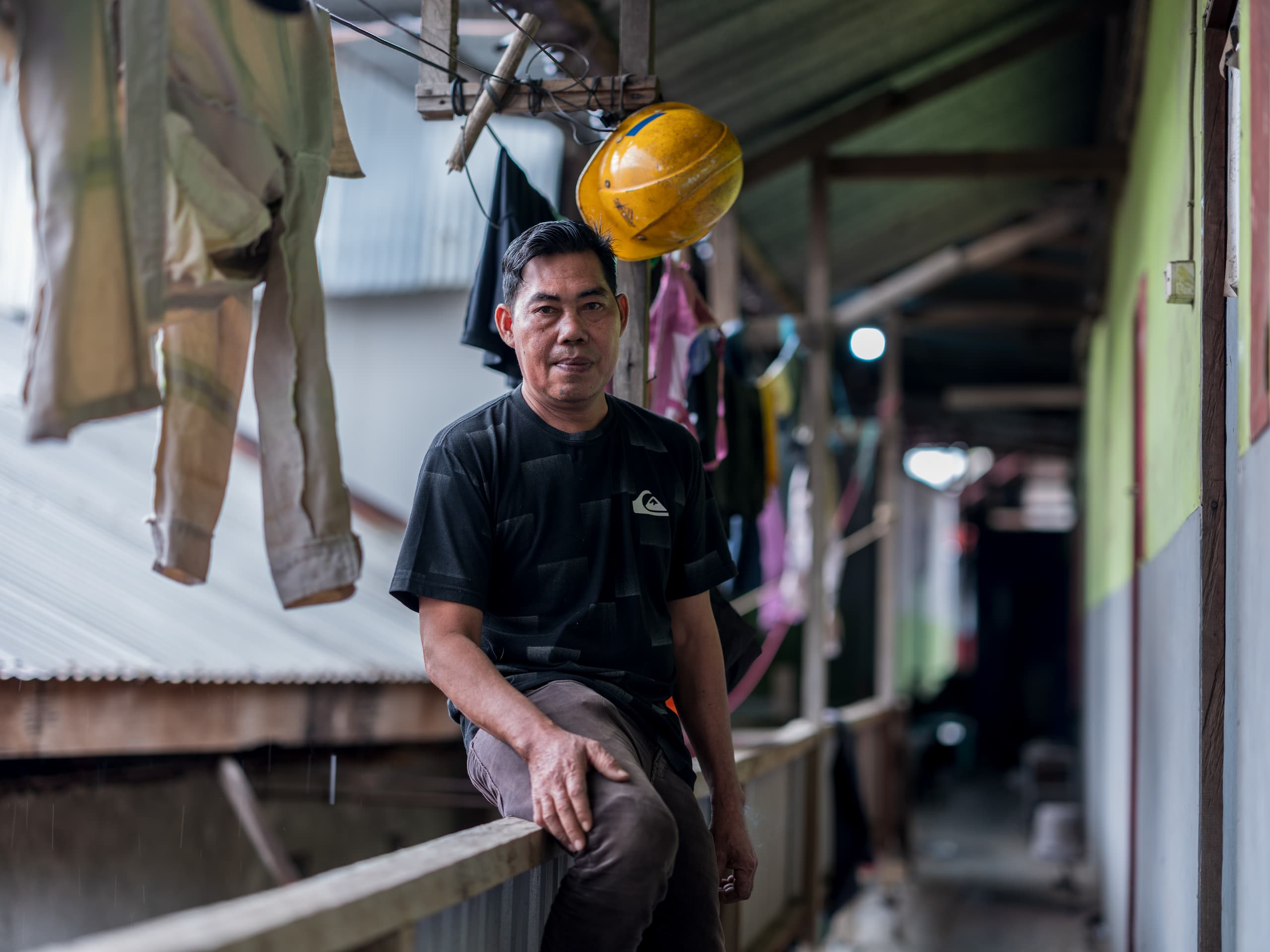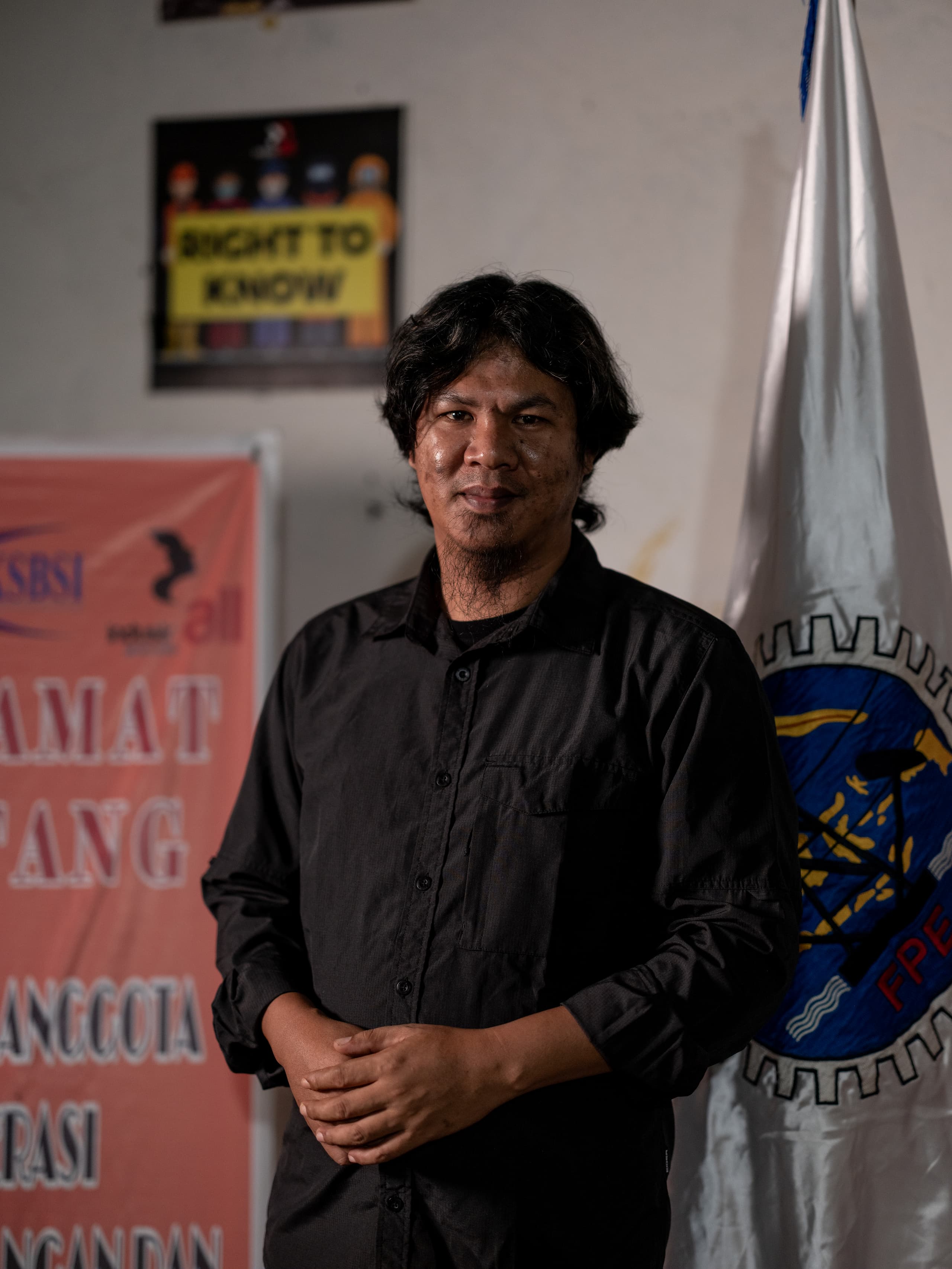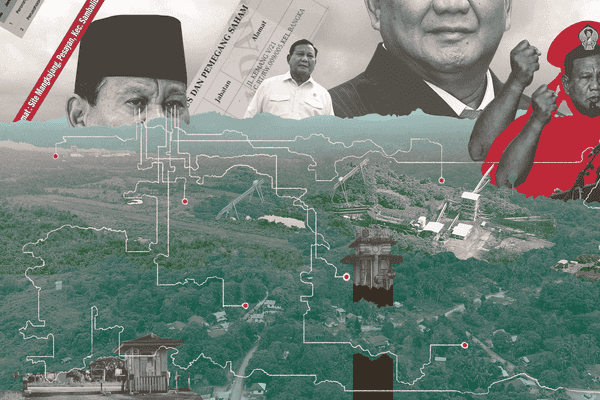Video featured header
Articles now have an optional "video" input that will overlay the header image with a moving video. It is important to also always select a featured image -- that image will be used for social media sharing, SEO, and backup default for users who deactivated autoplay video in their browsers.
Header caption
There is also a new optional "header caption" option. The caption is shown at the bottom of the article.
Filler text
The Bajau village at Morombo was created by a shipwreck. Thirty years ago, the community lived a nomadic existence on flat-decked sope houseboats from which they spear-fished and dove for clams and conch in the waters off Sulawesi, the orchid-shaped island at the centre of the Indonesian archipelago.
Then, in the late-1990s, their flotilla was caught in a storm, smashing the boats and leaving them homeless. Around forty families settled, temporarily, in this small-mouthed bay on the eastern coast of Southeast Sulawesi, building stilt-huts over the water to wait until they could afford to buy new vessels and return to the sea. Like many of Indonesia’s Bajau communities, they ended up staying on land. Traditional boat building has all but died out, and the government offered them incentives to settle down. Despite being becalmed on the shore, they were able to recreate their old livelihoods,
Examples of single caption layouts
Regular caption
Extra-wide caption
Full width caption
Left-aligned-out caption
Five years ago, the nickel rush came to Morombo. First, a few pits opened inland of the village, cutting down trees and stripping back the topsoil to expose the orange dirt below. Gradually, the mines bled together, congealing into an orange ring that completely engulfed the village. To reach the settlement now means driving first through flooded and broken tracks through palm oil plantations, and then through the mines themselves. The sodden path threads between wide concave pits, the whole landscape a rusted monotone overseen by long ranks of Komatsu diggers and the low, loping forms of stray dogs. An access road for the mine runs above what passes for a main street in the village.
Five years ago, the nickel rush came to Morombo. First, a few pits opened inland of the village, cutting down trees and stripping back the topsoil to expose the orange dirt below. Gradually, the mines bled together, congealing into an orange ring that completely engulfed the village. To reach the settlement now means driving first through flooded and broken tracks through palm oil plantations, and then through the mines themselves. The sodden path threads between wide concave pits, the whole landscape a rusted monotone overseen by long ranks of Komatsu diggers and the low, loping forms of stray dogs. An access road for the mine runs above what passes for a main street in the village.
Distant explosions echo around the bay. Dust rises out of the pits and blows over the village, settling on every structure. The bay itself has turned the same orange as the land as silt washes down from the denuded hills. Fishing trips yield dwindling catches, and the community is no longer self-sufficient, relying instead on what they call “dust money”—compensation from the mining companies that totals just 400,000 rupiah ($25.70) a month per household.
Image gallery
This image gallery can show any number of images, flowing them two per row, falling back to single image per row on mobile. Each image can have its own caption, and the whole gallery can have a single gallery caption.
Image aspect ratio matters: for best results, images on the same row should have the same aspect ratio.




Then, in the late-1990s, their flotilla was caught in a storm, smashing the boats and leaving them homeless. Around forty families settled, temporarily, in this small-mouthed bay on the eastern coast of Southeast Sulawesi, building stilt-huts over the water to wait until they could afford to buy new vessels and return to the sea. Like many of Indonesia’s Bajau communities, they ended up staying on land. Traditional boat building has all but died out, and the government offered them incentives to settle down. Despite being becalmed on the shore, they were able to recreate their old livelihoods,
“[The shore] was still green, bright. The water was clear,” says Diana, one of the last generation in the village to be born at sea. “We could collect clams. We could fish with spears.” It wasn’t the same as life on the sea, she says, but they were happy enough. Diana is a taut, wiry woman in her seventies with platinum hair and crystal blue eyes. In her house, suspended a metre above the water, she speaks with a barely restrained fury as she describes how the refuge they found on the shore has been taken away from them.
Five years ago, the nickel rush came to Morombo. First, a few pits opened inland of the village, cutting down trees and stripping back the topsoil to expose the orange dirt below. Gradually, the mines bled together, congealing into an orange ring that completely engulfed the village. To reach the settlement now means driving first through flooded and broken tracks through palm oil plantations, and then through the mines themselves. The sodden path threads between wide concave pits, the whole landscape a rusted monotone overseen by long ranks of Komatsu diggers and the low, loping forms of stray dogs. An access road for the mine runs above what passes for a main street in the village.
More text filler
Five years ago, the nickel rush came to Morombo. First, a few pits opened inland of the village, cutting down trees and stripping back the topsoil to expose the orange dirt below. Gradually, the mines bled together, congealing into an orange ring that completely engulfed the village. To reach the settlement now means driving first through flooded and broken tracks through palm oil plantations, and then through the mines themselves. The sodden path threads between wide concave pits, the whole landscape a rusted monotone overseen by long ranks of Komatsu diggers and the low, loping forms of stray dogs. An access road for the mine runs above what passes for a main street in the village.
Another header
Distant explosions echo around the bay. Dust rises out of the pits and blows over the village, settling on every structure. The bay itself has turned the same orange as the land as silt washes down from the denuded hills. Fishing trips yield dwindling catches, and the community is no longer self-sufficient, relying instead on what they call “dust money”—compensation from the mining companies that totals just 400,000 rupiah ($25.70) a month per household.
“We’re half dead on land,” Diana says. “Everything is broken. The sea turned brown. We’re eating dust.”
Five years ago, the nickel rush came to Morombo. First, a few pits opened inland of the village, cutting down trees and stripping back the topsoil to expose the orange dirt below. Gradually, the mines bled together, congealing into an orange ring that completely engulfed the village. To reach the settlement now means driving first through flooded and broken tracks through palm oil plantations, and then through the mines themselves. The sodden path threads between wide concave pits, the whole landscape a rusted monotone overseen by long ranks of Komatsu diggers and the low, loping forms of stray dogs. An access road for the mine runs above what passes for a main street in the village.
Distant explosions echo around the bay. Dust rises out of the pits and blows over the village, settling on every structure. The bay itself has turned the same orange as the land as silt washes down from the denuded hills. Fishing trips yield dwindling catches, and the community is no longer self-sufficient, relying instead on what they call “dust money”—compensation from the mining companies that totals just 400,000 rupiah ($25.70) a month per household.
“We’re half dead on land,” Diana says. “Everything is broken. The sea turned brown. We’re eating dust.”

